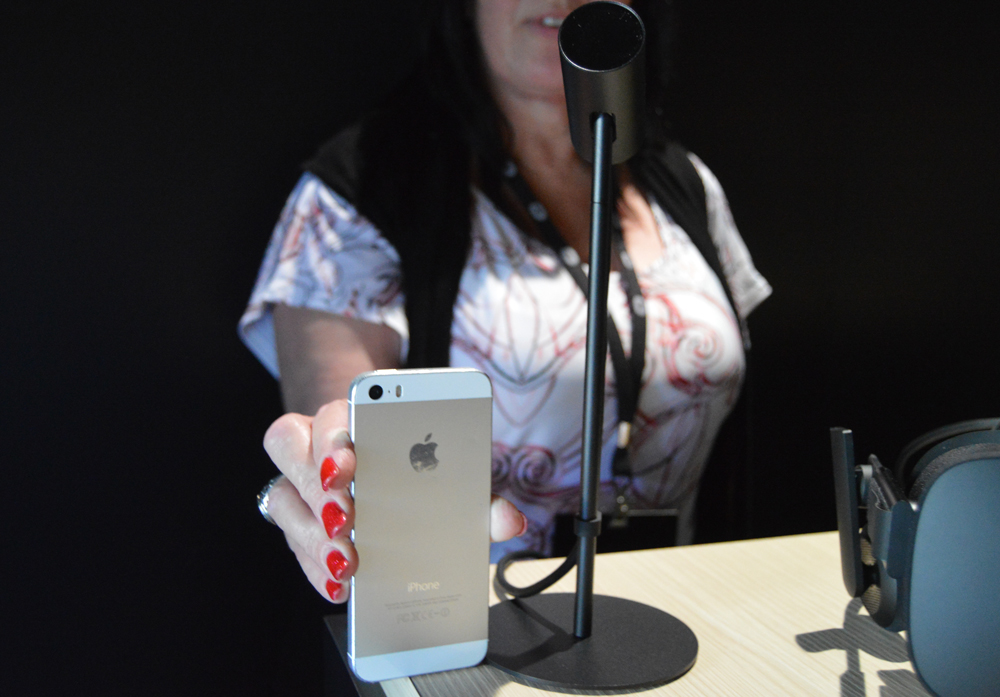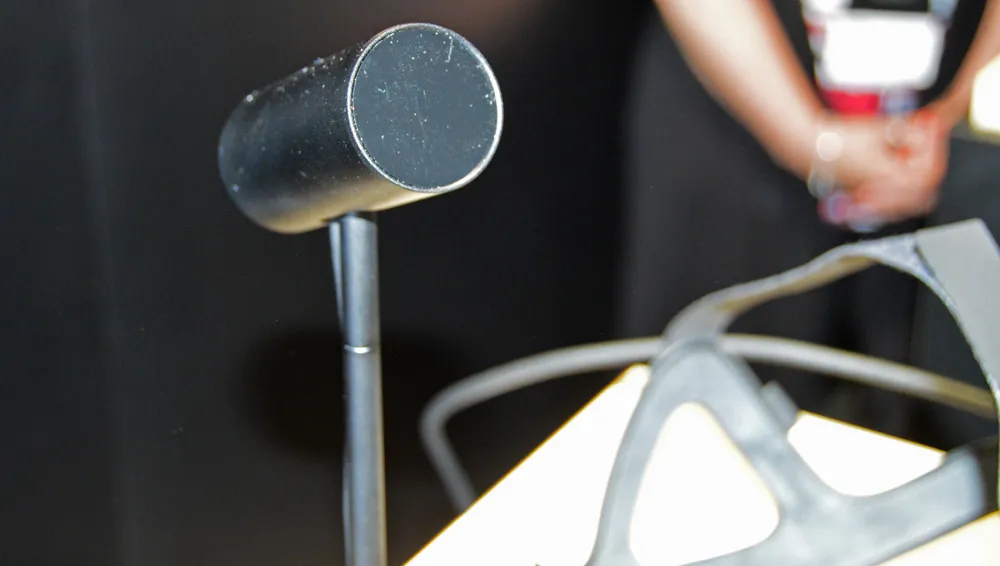When Valve and HTC announced the Vive back at GDC one of the things that truly separated it was the ability to have full room scale tracking using the lighthouse system. A number of people wondered, how would Oculus respond. Today we got a look at that solution, which Oculus is calling Constellation and we learned a few things after the show that are sure to excite VR enthusiasts around the world.
The Constellation sensor sits mounted on a stand that is about ten inches tall – based on this rough scale comparison between it and my iPhone 5s.

In terms of design, the sensor looks amazing, something that Brendan Iribe realized was a priority for something that might reside either on the desk – or as the promotional photos often showed, in the living room. The design is the result of the collaboration between Oculus and the acquired team at Carbon Design – who were behind the original Xbox 360 controllers.
But the burning question isn’t how does the tracking system look – but rather how well does it work? And while we weren’t able to get a hands on to tell you we did learn a number of exciting things about it – including whether we will have the type of room scale experiences that have made the Vive such a darling of the community. We asked Iribe about those kind of experiences and whether we would be able to see them on the Rift and the answer was music to our ears.
“Constellation will allow for a bigger room area,” says Oculus CEO Brendan Iribe, “so you will be able to move around in it – and we have a number of different things that we are going to be talking about as we move forward on this.”
As shown the Constellation system uses a “single camera solution” on a basestation but the headset has “full 360 tracking, all off of a single camera – which is very impressive,” says Iribe. But that single solution won’t be the end of its bag of tricks.
The HTC Vive uses a combination of two tracking sensors to create a trackable space of about 15’x15′ – with the capacity to add more sensors to enhance the trackable volume and space. It looks like Oculus will be following suit. “We do support multiple sensors,” says Iribe, “It doesn’t require you to mount things on your walls – but you can if you want to. We’ve made it so the sensor has a standard screw hole that you can screw in if you want to mount them in different places.”
So it looks like the Oculus Rift will give you the option to expand your tracking range – potentially to a full room scale level, which if true really works to level the playing field.
Pressing Iribe to offer more information on what the tracking system will be like when he smiled and teased, “you will see it at E3.”
That we will Brendan, that we will.


























